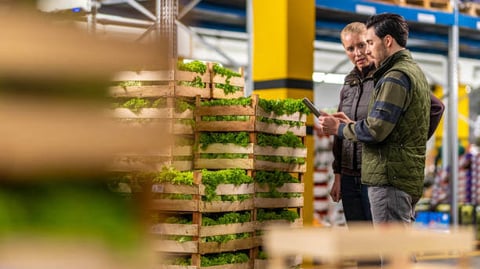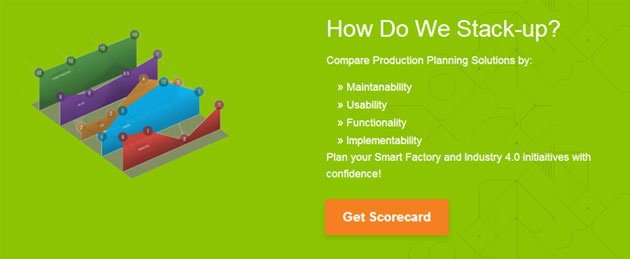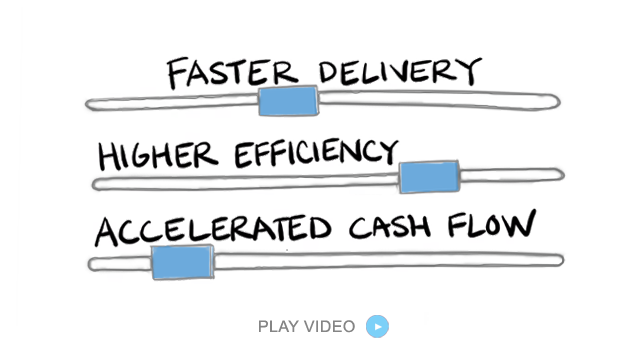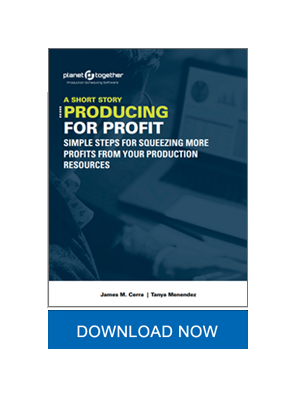ESG Goals vs. Profit: A Purchasing Manager’s Balancing Act in Food and Beverage Manufacturing
In the fast-paced world of Food and Beverage (F&B) manufacturing, Purchasing Managers are no longer evaluated solely on cost savings and supplier reliability. Today, a new layer of responsibility sits squarely on your shoulders: contributing meaningfully to your company’s Environmental, Social, and Governance (ESG) objectives—without compromising on profitability.
Sounds like walking a tightrope? That’s because it is.
But here's the good news: with the right tools and data-driven strategies—particularly solutions like PlanetTogether Advanced Planning and Scheduling (APS) integrated with systems like SAP, Oracle, Microsoft, Kinaxis, or Aveva—it's entirely possible to align ESG initiatives with financial performance.
In this blog, we’ll explore how you, as a Purchasing Manager, can turn this seeming conflict into a win-win.
The ESG Pressure Cooker
Let’s face it—pressure is mounting from all sides.
Consumers are demanding clean labels, sustainable sourcing, and ethical practices.
Retailers and distributors are tightening ESG compliance expectations.
Governments and regulatory bodies are enforcing stricter sustainability laws.
And investors are using ESG scores as a benchmark for long-term viability.
As a result, you’re likely tasked with sourcing materials that are organic, local, fair-trade, non-GMO, or eco-friendly—all while staying within strict budget parameters.
That’s no small feat. Especially when traditional procurement KPIs are still heavily cost- and margin-driven.
Profitability: The Immovable Object
Profitability is non-negotiable. Margins in the F&B sector are notoriously thin, and volatility in raw material costs, transportation, and labor can shrink them even further.
Here’s where the tension arises: many ESG-driven purchases (think biodegradable packaging, carbon-neutral transportation, or ethically sourced ingredients) tend to be more expensive—at least in the short term.
So how can Purchasing Managers meet sustainability expectations without cannibalizing profits?

The Data Dilemma—and the Solution
To solve the ESG vs. profit conundrum, you need real-time, holistic data visibility. Unfortunately, many F&B manufacturers still operate in silos—where procurement data is separated from production scheduling, inventory management, and supply chain analytics.
Enter PlanetTogether APS.
When integrated with enterprise systems like SAP, Oracle, Microsoft Dynamics, Kinaxis, or Aveva, PlanetTogether becomes a powerful control tower for aligning procurement strategies with both ESG and profit goals.

How Integration Helps You Win on Both Fronts
Let’s explore how this integration plays out in your day-to-day operations:
Prioritized Supplier Selection
With a unified system, you can score and prioritize suppliers not just on cost, but on ESG metrics like:
Carbon footprint per shipment
Waste generated in production
Fair labor practices
Recyclability of materials
By integrating PlanetTogether with SAP or Oracle, for example, this ESG data becomes actionable during supplier selection, enabling smarter decisions without toggling between systems.
Scenario Planning for Cost vs. ESG Trade-offs
PlanetTogether’s advanced scheduling engine allows you to simulate different purchasing scenarios:
What happens if you switch to a higher-cost sustainable packaging supplier?
Can the additional cost be offset by reducing waste in production?
What if transportation lead time increases—how does that affect on-time delivery?
Through integration with systems like Kinaxis or Microsoft, these simulations can incorporate upstream and downstream supply chain data. The result? You can run what-if scenarios that reveal the full cost-ESG implications before making a decision.
Just-in-Time Purchasing with a Sustainability Lens
Over-ordering to buffer against uncertainty may reduce the risk of stockouts—but it can also result in spoilage, excess waste, and bloated inventory. PlanetTogether APS helps you minimize this risk by aligning production scheduling tightly with supplier delivery and inventory cycles.
When integrated with systems like SAP or Aveva, you can:
Monitor freshness dates
Schedule inbound shipments more precisely
Reduce spoilage and material obsolescence
This leads to a win on all fronts: lower costs, reduced waste, and better ESG performance.
Supplier Collaboration and Traceability
Today’s F&B supply chains are increasingly global and complex. Integration between PlanetTogether and your ERP gives you end-to-end traceability—from farm to fork.
You can:
Track raw materials back to their origin
Monitor ESG compliance through the supply chain
Share ESG metrics transparently with your partners
This level of collaboration not only supports audits and compliance—it builds consumer trust and brand loyalty.

Tangible Results: A Real-World Example
Let’s say your company produces fruit juices. One of your ESG goals is to reduce plastic usage by 30% over two years. The problem? Compostable bottle materials are 20% more expensive than PET plastic.
Here’s how you could use PlanetTogether integrated with SAP to meet both goals:
Model the Cost Impact: Simulate the switch to compostable materials and see its effect on total production costs.
Offset the Margin Hit: Use integrated scheduling to reduce changeover times, minimize scrap, and streamline energy usage—offsetting higher material costs.
Strengthen Supplier Relationships: Identify reliable regional suppliers of compostable bottles, reducing transportation emissions and costs.
Track Progress: Monitor ESG KPIs and tie them back to cost-saving initiatives in a centralized dashboard.
Result? You hit your ESG goal and preserve profit margins.
Challenges to Watch For
Of course, there are hurdles:
Data standardization: Not all suppliers report ESG data in the same format.
Cost predictability: Sustainable materials may have volatile pricing.
Change management: Internal resistance to shifting procurement priorities is real.
The key is to pair your strategy with tools that can make the invisible visible. Integration between PlanetTogether and your ERP makes that possible.

Tips for the Purchasing Manager in Transition
Start with Low-Hanging Fruit: Identify high-impact, low-cost ESG wins—like switching to recycled cardboard packaging.
Leverage Supplier Scorecards: Build ESG performance into your vendor scorecards and review cycles.
Get in the Scheduling Room: Sit in on production planning meetings. Knowing what’s being produced—and when—will inform smarter purchasing.
Use KPIs That Tell the Full Story: Track not just cost savings, but emissions reduced, waste avoided, and compliance maintained.
Lean on Technology: Insist on integration between your APS (like PlanetTogether) and your ERP systems to eliminate guesswork.
Aligning Purpose with Performance
As a Purchasing Manager in the food and beverage industry, you’re at the crossroads of ethics and economics. The tension between ESG goals and profitability is real—but it’s also manageable.
With the right mindset and the right tools—particularly an integrated platform like PlanetTogether working alongside SAP, Oracle, Microsoft, Kinaxis, or Aveva—you don’t have to choose between doing well and doing good.
You can do both.
Ready to learn how PlanetTogether’s integration can help your facility balance ESG commitments with business success? Contact us today to learn more about how PlanetTogether can help you achieve your goals and drive success in your industry.
Topics: PlanetTogether Software, Integrating PlanetTogether, Food and Beverage Manufacturing, Just-in-Time Purchasing, Prioritized Supplier Selection, Supplier Collaboration and Traceability, Scenario Planning for Cost vs. ESG Trade-offs





















LEAVE A COMMENT